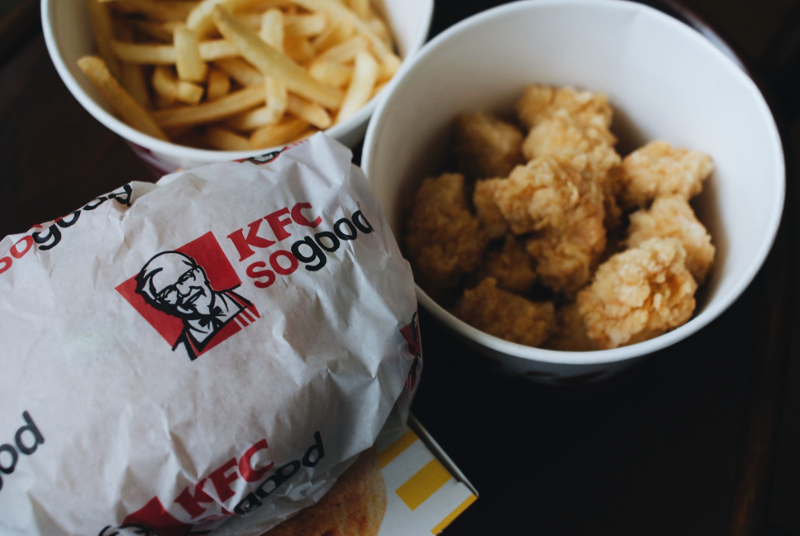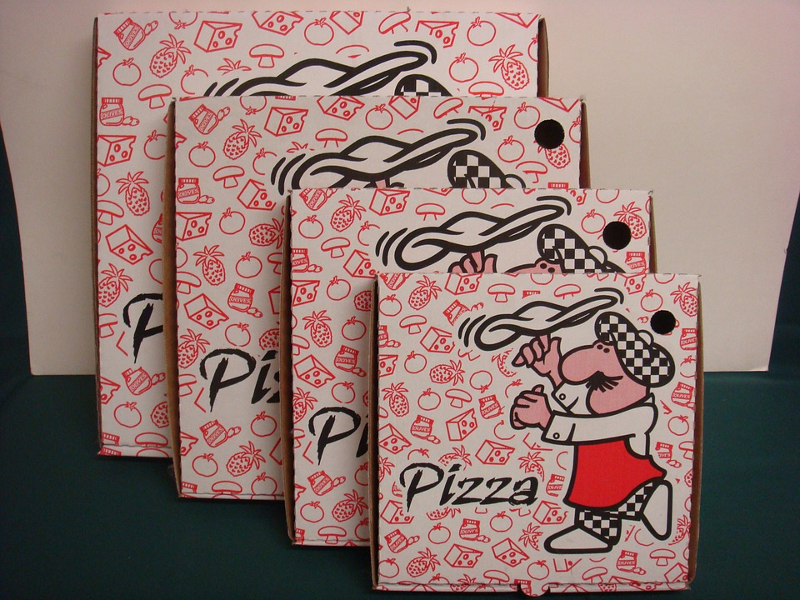7+ Fast Food Marketing Examples to Download
Popeyes. Shake Shack. Five Guys. Chick-fil-A. KFC. — these are just some of the most famous fast food restaurants dominating the streets of the U.S. to soothe our taste buds. But even with the growing popularity of fast food meals among consumers, many fast food brands continue to struggle with the right marketing tactics. And since the market continues to evolve at an unpredictable pace, brand marketers must develop strategies to keep their business above water.
- Relationship Marketing Examples That Make an Impact
- 10 Types of Marketing Style Examples & Samples in DOC
Types of Fast Food Marketing Strategies
With the general majority of society living a fast-paced life, fast food restaurants have become a popular choice for individuals who are always on the go — plus, their food looks and tastes good too. But this multi-billion dollar industry also owes its success to the different marketing strategies carried out in order to maintain its status as the front line of today’s culture.
Here are some basic strategies the fast food industry optimizes to sell their goods:
1. Volume and Visibility
Fast food restaurants are literally everywhere. Highly civilized cities and states typically have at least a single fast food restaurant at every corner. You don’t have to travel for miles just to enjoy a nice cup of iced coffee from McDonald’s, because you can practically find a McDonald’s chain just a few blocks away from home. These restaurants often come in clusters, but individual chains usually open numerous restaurants within a short distance to one another. Opening a continuous trail of fast food chains to expose the brand name and logo design is all part of fast food marketing. Not only is it highly accessible to consumers of every region, but the convenience of the fast food market also makes it a forerunner in the food industry.
2. Social Responsibility
The fast-food industry is infamous for its greasy and processed food selections (think UNHEALTHY), not to mention their excessive use of paper and plastic that generate tons of waste per year. The amount of criticism and backlash threw to the said industry has forced marketers to take on a wholesome and eco-friendly approach by responding with multiple ads showing whole foods purchased from farmers, along with healthier menu options to cater to the demands of health-conscious consumers. In fact, just recently, fast food giant McDonald’s has just announced their plans to ban the use of plastic straws at all their U.K. restaurant locations.
Social responsibility marketing is an essential form of marketing that businesses of any industry must practice. This is to address the public’s concern on social issues that exist in our world through various marketing campaigns. This is a major factor that can affect a consumer’s buying decision, especially when choosing between competitors with the same type of offerings.
3. Value and Affordability
Value and affordability are probably the two most important elements of fast food marketing. In this tight economy, consumers often go for good quality options that come at a reasonable price.
Free samples, food coupons, and value menus are just some marketing tools aimed at customers on a strict budget. Though maintaining these prices can be pretty challenging for most companies, especially with the possibility of sudden price hikes due to the scarcity of goods, businesses still strive to find alternative approaches to address these problems. Nevertheless, affordable prices remain a powerful marketing tool.
8 Examples of Successful Fast Food Marketing Campaigns
We often recognize a fast food restaurant by their company tagline such as KFC’s ‘Finger lickin’ good’ or Subway’s ‘Eat fresh.’
But beyond these slogans and business logos comes a wave of fast food marketing campaigns that are so clever, you wouldn’t even think it was an advertising stunt in the first place. These PR campaigns are often tailored according to the company’s targeted audience, which is currently made up of millennials. In a fast-changing market where the competition is high, fast foods brands are forced to reinvent and re-introduce themselves to prospects through co-marketing, social marketing, and other promotional strategies. This will help drive sales and increase revenue for the business to survive.
From the most bizarre to the most innovative marketing stunts to ever exist, we’ve rounded up some of the biggest fast-food marketing campaigns of all time:
1. KFC’s Original Recipe Fried Chicken
They say the only thing constant in this world is change. But if there’s one thing in this entire universe that managed to withstand the test of time, then it has to be KFC’s original recipe fried chicken.

Along with a secret recipe of 11 herbs and spices, Harlan Sanders (aka Kentucky Colonel) decided to close down his gas station business to turn it into a restaurant and motel of his own. After multiple experiments with his homemade fried chicken, Sanders finally came through with what we now know as the Original Recipe. This signature dish continues to break boundaries with over a dozen other restaurants desperately trying to imitate its taste. Though you can find hundreds of recipes online to achieve this savory taste, nothing comes close to the original recipe served at KFC outlets worldwide.
2. “The Secret Menu” (Unknown)
Though it isn’t clear who the mastermind behind the first-ever ‘secret menu’ is, many experts pay their credits towards the famous American burger chain In-N-Out. It’s been said that their secret menu first made its rounds during the 1970s with items like the Animal Style Burger and the Protein Style. It has since grown to a long list of items of different variations which have been embraced by the company and its customers so much that we might as well label it as a ‘not-so-secret menu.’
Besides In-N-Out, other brands such as Starbucks, Nando’s, Burger King, Chipotle, and Five Guys offer their own type of secret menu items for customers to enjoy. While the popularity of these secret menus has made these special items the exact opposite of a secret, they still bring a level of excitement and exclusivity to frequent customers of a given fast food chain.
3. Pizza Hut Boxes Project Movies
Movie night will never be complete without a mouthwatering box of pizza in place. So to connect the dots between Pizza Hut and movies, the company created a DIY projector called the Blockbuster Box.

This unique marketing stunt was the perfect fit for pizza lovers and movie aficionados alike. Customers can turn their pizza box into a projector by simply punching a hole along the side of the box to insert the lens being provided. Once this is done, you can then use your smartphone to bring the experience to life. Pizza Hut even printed a QR code for each box that allows users to download a movie for free. Though this device is a far cry from the modern projectors we see in stores, it’s still a free medium that customers can take advantage of.
4. The Face of Ronald McDonald
We’ve all heard about actors and musicians rebranding themselves as a celebrity marketing move, but did you know that mascots have been doing it too?
Aiming to cement its status to its kid demographic while also appealing to its older market, the famous Ronald McDonald underwent a serious reimaging process in 2014. Although his transformation wasn’t life-changing or anything, it still allowed the company to bring itself back into the limelight. The makeover gave customers something to talk about for awhile, like how Ronald’s fashion taste depicts a contemporary culture in different ways. It was a harmless and subtle approach to fast food marketing, yet it created a buzz that left people talking for days.
5. McDonald’s All-Day Breakfast
So maybe we’ve already mentioned McDonald’s one too many times in this article, but seriously, how can you not talk about McDonald’s?
If you’re a fan of the popular fast food restaurant, then you know exactly how good everything on their breakfast menu is. For years, customers have been begging the brand to keep their breakfast meals running even after the 10:30 AM cut-off but to no avail. It was a movement conducted by McDonald’s lovers across various social platforms — be it Twitter or email. You’d be surprised how many people have written open letters to the brand to express their sentiments on the said matter.
Finally, in 2015, these efforts paid off after McDonald’s CEO Steve Easterbrook caved into the hype by implementing the All-Day Breakfast menu. The company immediately noticed a sudden jolt in sales and revenue by a significant percent. They even expanded their menu to offer more widespread options in an attempt to generate more sales. While the campaign didn’t quite pay off the way the folks at McDonald’s had hoped for, it was still a major turn around for the suffering brand that year.
6. Domino’s Pizza’s Pepperoni Passion
Who knew that being 101% truthful with your customers would boost sales at an incredible rate?
For Domino’s pizza, launching a campaign that put them in a bad light surely paid off in ways that no one would have expected.
The ad campaign was pretty simple, but it wasn’t something that other fast food restaurants would ever dare to do. Domino’s startled its respective market with an admission — that its food wasn’t very good. While some would argue that their pizza isn’t ‘better’ now, there’s no denying how this witty approach to advertising helped the company strike marketing gold.
7. Wendy’s Chili
If you ask any food lover’s opinion on what to order at Wendy’s, they’re likely to suggest the fast-food chain’s popular dish, the chili. Though this wasn’t the first thing that popped from the menu when the restaurant first opened its doors in 1969, it’s been crowned a customer favorite ever since its debut. The restaurant’s 2001 commercial featuring the brand’s meaty chili even became one of the most successful campaigns from the brand in all of history.
8. Denny’s “Weird Twitter”
When it comes to modern fast food marketing, Denny’s is way ahead of its game.
For one thing, their social media marketing game is on point. The brand’s approach to marketing is entirely different from the traditional type of advertising due to their creative use of the platform to post relatable content. So if you own a Twitter account, then you may want to keep your notifications on for Denny’s.
Their strategy was pretty simple. All they had to do was pay attention to the latest trends and topics that their audience would likely connect to. Rather than investing on numerous conventional and predictable campaigns, they used social networking sites like Twitter and Tumblr to develop content. This offbeat approach soon paid off big time when the company generated over 110 million impressions for their internet marketing attempts.
The food industry is full of surprises. You see fast food brands constantly come out with new offerings, limited edition must-haves, and special menus from every corner, leaving the consumer market with a wide variety of food options to choose from. But fast food marketing is a tricky business as well. Brands must develop unique and creative marketing gimmicks in order to connect with their customers. With the right marketing plan in place, the business is sure to obtain success in its purest form in no time.


